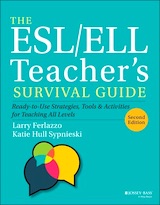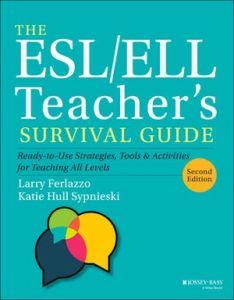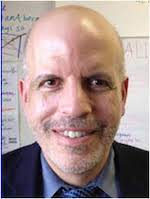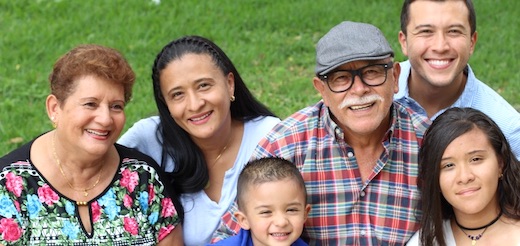Help Language Learners Lead Their Own Learning

By Larry Ferlazzo and Katie Hull Sypnieski
Researchers investigating the Organizing Cycle have found that good leaders and successful language learners share similar attributes including being intrinsically motivated, possessing a sense of self-efficacy (a belief in one’s ability to succeed), a willingness to take risks and learn from mistakes, and a desire to teach others.
We have heard many educators talk about wanting to “empower” their English language learners to develop these qualities. If you look up the definition of “empower,” it is generally defined as: to give (someone) the authority or power to do something. In a culturally responsive-sustaining classroom, however, power is not something to be “given,” just as self-efficacy or motivation are not “given” to students by the teacher. Instead, we as teachers can provide the conditions for these qualities to grow and flourish (an idea we have borrowed and modified from Sir Ken Robinson).
When teaching ELLs through a lens of culturally responsive-sustaining pedagogy, in addition to building positive relationships and accessing prior knowledge, centering student voice is another critical component of creating the conditions for student success. In other words, the teacher asks for, listens to, and acts on student ideas and feedback.
Identifying and Mentoring Students’ Leadership Potential
Here are some practical ways we support students in “taking power” to co-construct the teaching and learning in our classrooms:
► Engaging with students about what they want to learn, how they want to learn, and when they want to learn (in what chronological order). Asking for student input on curriculum and instruction can be done in numerous ways – from simply asking them in conversation to eliciting their input through surveys or other writing activities. It is most important for teachers to elicit student input on a regular basis (we aim for once a week at a minimum) and to act on this input by using student feedback to improve instruction, increase engagement, and affirm students’ voices. In Chapter Nineteen of our book, we share examples of questions we use to gain this kind of student input.
► Establishing Student Leadership Teams (discussed in Chapters Two and Seven). We identify students who seem to be taking leadership in group or class activities and invite them to be part of a class leadership team. Team members are often responsible for leading small group activities, regularly meeting with us to evaluate what seems to be working and not working in class, helping to identify new students who they will mentor, and completing weekly reflections on their own work as leaders. Once the team is formed, we then extend an open invitation to any student who wants to develop their leadership skills.
► Providing ELLs opportunities to teach others. As we’ve stated, the ability to teach others is a key quality of a successful language learner and a good leader. We often incorporate strategies, like Jigsaw discussed in Chapter Three, where students are supported in teaching each other through literacy activities. These can be short and informal activities where students are teaching their ELL classmates, or may involve longer, scaffolded projects where ELLs and non-ELLs come together to teach and learn from each other. Many times the content of the jigsaws are based on student requests.
One project at our school that fits into this category, but is not a jigsaw, is an annual event first organized by our colleague, Pam Buric, and named the Empathy Project. It involves intermediate-to-advanced ELLs writing stories about their lives which they then share with non-ELL students and their teachers in our school library. The non-ELL students arrive prepared with note-taking sheets to encourage active listening and empathetic responses. After writing and sharing their stories, the intermediate-advanced ELLs then “teach” students in the beginning ELL class how to write their own stories (with scaffolds like sentence starters), followed by a sharing day where both classes read their stories to each other.
Every year, English proficient students and their teachers learn so much from our students, who, in turn, share with us the power they feel in having their voices heard. For more on this project, see the Tech Tool at the end of this post.
► Having peer mentors, especially for ELL newcomers, enhances student-to-student relationships and centers students as leaders on campus. Peer mentors are different from peer tutors because they are not asked to assist with daily academic tasks, but instead provide overall counsel on school and life. Older (though not always) trained student mentors who are ELL intermediates or advanced students meet weekly with their mentees (ELL newcomers or beginners) to build relationships and offer advice. Mentors regularly meet with teachers to discuss any problems the mentee may be dealing with and how the mentor can best be helpful.
► Asking students to share with school staff what helps them learn. Providing students with an opportunity to offer feedback on their classroom experiences can be powerful for students and teachers. One example of this kind of activity is asking our ELLs to complete a survey with questions focused on three key elements of ELL instruction – differentiation, student motivation, and affirming error correction. Here are examples of the questions we give to intermediate-advanced ELLs (beginners can be given a version that is simplified or translated into their home language):
- What do teachers do that helps you understand what they are teaching, even though you may not know English that well? For example, do they show pictures that help you understand the content? Please try to write about specific lessons and experiences.
- What are specific actions teachers have taken to help you become motivated to learn different subjects and the English language? Please try to write about specific lessons and experiences.
- What have teachers done to help you not feel bad about making mistakes and, instead, learn from them? In other words, what are the best actions teachers have taken to correct English errors you have made in writing or in speaking?
The results of the survey can be shared in various ways, but we have found organizing a student panel (composed of student volunteers who meet together to practice and prepare ahead of time) to share their answers with teachers at staff or department meetings to be most powerful. In the past, we have recorded these sessions (with student and parent permission) and made them accessible to the whole school staff. See the Tech Tool below for examples of these student panels and preparatory materials.
► Distributing power to everyone in our classrooms. In community organizing, sometimes decision-makers feel that power is like a finite “pie” – if others get power, that can mean that the decision-makers have less power. In reality, organizers and others believe that the more power is distributed, the more possibilities are created. In other words, the pie itself gets bigger.
We would suggest the same is true in the classroom – the more power that is distributed to everyone in the class, the greater the motivation, the creativity, and the possibilities for everybody, including the teacher.
Learning By Doing
As we discuss in Chapter Seven of our book, the “Learning By Doing” element of the organizing cycle is rooted in the education theory of John Dewey who believed (and much research has since confirmed) that students learn better by actively participating in an experience, particularly if working with others, as opposed to just being told about it.
Culturally responsive-sustaining teaching involves creating many opportunities for ELLs to “learn by doing.” In earlier chapters, we’ve shared examples of “learning by doing” through cooperative learning activities and inductive teaching. Obviously, the activities described in the previous section on promoting student voice and leadership can also be categorized as “learning by doing.” Here are some additional strategies for ELLs that promote active learning in culturally responsive-sustaining ways:
- Creating lessons which directly connect to students’ lives. To ensure learning happens both inside and outside the classroom, teachers need to look to students, their families, and the community when planning learning activities. Asking students to identify and propose solutions to challenges they and their families are facing can result in greater learning and engagement. See the section on Critical Pedagogy in Chapter Three and the sample Problem-Solution Unit Plan in Chapter Six for how we structure these kinds of activities for beginner and intermediate ELLs.
- Another example of a lesson rooted directly in student experience happened when the neighborhood of our school was identified as a low response community for the U.S. Census. Students decided to create bilingual posters and materials encouraging community members to complete the census forms so that their neighborhood would receive a fair share of public resources. Students then distributed those materials to friends, families, and neighbors. During the pandemic, we did a similar student-led project on vaccine awareness.
- Providing students the opportunity to choose what they want to read from a diverse classroom library. Rudine Sims Bishop has taught us that books can be “windows” for students (allowing them to see many different views of the world), they can also be “sliding glass doors” (that students can walk through, becoming part of a world created by the author), and, when the lighting conditions are right, windows can also be “mirrors” (that students can see themselves and their experiences reflected in books and reading thus becomes a means of “self-affirmation”). Over the years we have intentionally diversified our classroom libraries, along with the texts we share in class, so that our students are able see many mirrors.
- Learning by doing from parents. Inviting family members of our students to come and share their knowledge and experiences can be an especially meaningful learning activity. In our experience, once we have established positive relationships with parents (using the ideas described in Chapter Two), they have been very willing to share their skills and traditions in our classrooms (like the example in Chapter Two of our book of a Hmong father sharing his expertise at making and repairing the traditional Hmong flute called the qeej)
Teacher Reflection
Though the ideas shared so far on the first four principles of the Organizing Cycle have focused on students, we are changing gears in this section to consider teacher reflection. Specific ideas on student reflection can be found throughout our book, especially in Chapter Three.
In Chapter Twenty we focus on reflective teaching and professional development. Here we would like to share some questions that are particularly important for teachers to consider in the context of culturally responsive-sustaining teaching. These critical questions come from our book The ELL Teacher’s Toolbox.
✻ How well do I know my students?
We try to ask ourselves this question on a regular basis and not just at the beginning of the year. Our students are growing young people who change on a daily basis and it’s important we continue to seek out their interests, goals, challenges, and successes.
✻ Do my words reflect a culturally responsive-sustaining mind-set when I am talking to students and about students?
We try to stay mindful of the ways – both positive and negative – that our words can impact students. Pronouncing their names correctly and not characterizing students’ beliefs as “right” or “wrong” through our words or even our facial expressions are two ways we honor students’ cultural backgrounds and identities.
We have found as teachers we can be far more effective in raising questions and being curious than in making judgements. We are also intentional in the way we speak about our students.
Sometimes well-meaning (or not) people ask us questions like “How do you do it?” or “How can those students learn when their lives are so crazy?” after learning that we work at a school located in a high-poverty area. While it can be tempting to tell stories of the trauma our students have faced in an attempt to demonstrate their resilience, doing so can often do more to perpetuate stereotypes than shatter them. Instead, we share about the rich cultural and linguistic contributions our students make each day to our school, their families, and the community.
✻ How are my instructional practices culturally responsive and sustaining?
In our ELL classes, we use best practices, such as modeling, tapping prior knowledge, encouraging home language use, instructional scaffolding, and collaborative learning, just to name a few, to build the language, academic, and critical thinking skills students need to be successful lifelong learners. As we’ve described in this chapter and in many other parts of this book, building on students’ cultural and linguistic experiences is critical to increasing learning outcomes for students.
✻ How is the curriculum I am using culturally responsive and sustaining?
Curriculum doesn’t have to incorporate texts and information about every student’s culture in every lesson to be considered culturally responsive-sustaining. Nor should it include having a token “multicultural day” once a year to “celebrate” different cultures.
Though we are continually learning how to make our curriculum more culturally responsive and sustaining, the following considerations have produced positive outcomes for our students:
- materials representing diverse cultures and perspectives
- curricular opportunities for students to share their cultural and linguistic knowledge with each other
- allowing students to choose books to read from a diverse classroom library
- inviting family and community members to share cultural knowledge in the classroom –using digital content to instantly connect students with a variety of cultural and linguistic resources
- creating lessons on issues (like immigration policies) directly affecting students’ lives
- facilitating open classroom dialogues about the role of race, racism, and religious prejudice (e.g. Islamophobia) in our students’ daily lives, including at school. See the Tech Tool below for resources on having these kinds of discussions with students.
 Tech Tool
Tech Tool
Resources on Culturally Responsive and Sustaining Teaching
► For many resources on culturally responsive and sustaining pedagogy, see The Best Resources About ‘Culturally Responsive Teaching’ & ‘Culturally Sustaining Pedagogy’ at Larry’s website.
► More information on the value of correctly pronouncing student names can be found at The Best Resources on the Importance of Correctly Pronouncing Student Names.
► For more resources on helping students to teach others, see The Best Posts on Helping Students Teach Their Classmates.
► A more detailed explanation of the Empathy Project, including downloadable handouts, can be found in the guest post on Larry’s blog titled What ELLs Taught Our School in a Week-Long Empathy Project.
► For more on how we facilitated Student Panels, see A New Student Panel of ELLs is Presenting at our Staff Training Tomorrow.
► For resources about the importance of diverse books for students, see A Beginning Collection of Resources about Books as Windows, Mirrors, & Sliding Glass Doors.
► For information on facilitating classroom discussions on racism see A Collection of Advice on Talking to Students about Race, Police, and Racism.
► In addition, you can find resources on teaching current issues related to students’ lives at The Best Posts and Articles on How to Teach ‘Controversial’ Topics.
NOTE: This post is adapted from The ESL/ELL Teacher’s Survival Guide: Ready-to-Use Strategies & Activities for Teaching All Levels (2nd Edition). Links to all the online activities shared in the book can be found at the publisher’s book page. Click here and go to the very bottom of the page to find the free DOWNLOAD links for all the Exhibits, Figures and Bonus Chapters. It’s a true treasure! Many materials mentioned by chapter in this post can be found.

Katie Hull Sypnieski teaches English Language Learners and English-proficient students at Arthur A. Benjamin Health Professions High School in Sacramento, California. She is a Teacher Consultant with the Area 3 Writing Project at the University of California, Davis and is a co-author of The ELL Teacher’s Toolbox and Navigating the Common Core with English Language Learners.
Larry and Katie are co-authors of the 1st and 2nd editions of The ESL/ELL Teacher’s Survival Guide: Ready-to-Use Strategies, Tools & Activities for Teaching All Levels (Wiley/Jossey-Bass, 2022).






































